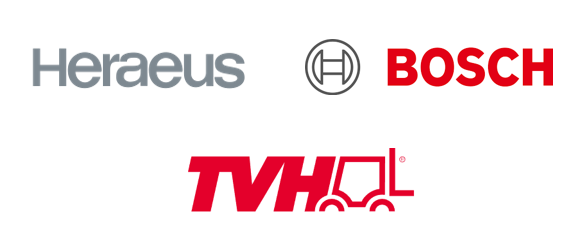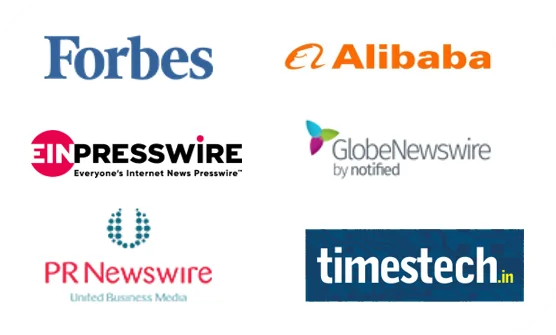Market Overview:
"As per Reports and Insights analysis, the global Hydrogen/BEV/HEV powertrain market is expected to register revenue CAGR of 7.5% during the forecast period of 2025 to 2033."
|
Report Attributes |
Details |
|
Base Year |
2024 |
|
Forecast Years |
2025-2033 |
|
Historical Years |
2021-2023 |
|
Market Growth Rate (2025-2033) |
7.5% |
Hydrogen, Battery Electric Vehicles (BEVs), and Hybrid Electric Vehicles (HEVs) represent innovative powertrain technologies determining the automotive landscape. Hydrogen-powered vehicles utilize fuel cells to generate electricity, emitting only water vapor. BEVs solely rely on batteries for power, producing zero tailpipe emissions and offering quiet operation. HEVs combine internal combustion engines with electric propulsion, enhancing fuel efficiency and reducing emissions. In the market, hydrogen vehicles are emerging, offering longer ranges and fast refueling, though infrastructure is limited. BEVs are gaining popularity with environmental benefits and expanding charging networks. HEVs provide transitional option, balancing efficiency and convenience. Each technology caters to diverse consumer needs and environmental goals.
The global Hydrogen/BEV/HEV powertrain market is registering steady revenue growth. BEVs are leading the growth due to environmental appeal and improving infrastructure. Hydrogen-powered vehicles are gaining traction with long-range capabilities and quick refueling, supported by increasing refueling stations. HEVs offer transition towards electrification with enhanced efficiency. Advancements in battery technology, charging infrastructure, and fuel cell efficiency are driving innovation. Governments and industries are investing in incentives and research to drive adoption, which in turn is expected to support market revenue growth. These powertrains collectively reduce emissions, promote energy security, and revolutionize transportation. In-depth analysis reveals dynamic landscape with diverse consumer preferences and evolving sustainability goals.
Hydrogen/BEV/HEV Powertrain Market Trends and Drivers:
Environmental Regulations and Policies: Stringent emission regulations and government incentives to reduce carbon footprints are driving adoption of hydrogen, BEV, and HEV powertrains, supporting favorable market environment.
Technological Advancements: Continuous advancements in battery technology, hydrogen fuel cells, and electric drivetrains are improving the efficiency, range, and performance of these powertrains, enhancing appeal to consumers.
Infrastructure Development: Expanding charging networks for BEVs and increasing hydrogen refueling stations for hydrogen-powered vehicles are alleviating range anxiety and encouraging consumers to embrace these alternative powertrains.
Consumer Awareness and Preferences: Growing environmental consciousness and shifting consumer preferences toward sustainable transportation options are driving demand for hydrogen, BEV, and HEV vehicles, driving market revenue growth.
Industry Collaborations: Partnerships between automotive manufacturers, energy companies, and governments are supporting research, development, and investment, accelerating the availability and affordability of these powertrain options.
Total Cost of Ownership: Over time, the lower operating and maintenance costs of hydrogen, BEV, and HEV vehicles compared to conventional internal combustion engine vehicles are becoming increasingly evident, attracting cost-conscious consumers and fleet operators.
Hydrogen/BEV/HEV Powertrain Market Restraining Factors:
High Initial Costs: Upfront cost of hydrogen, BEV, and HEV vehicles remains relatively high compared to conventional vehicles, deterring price-sensitive consumers from adopting these alternatives.
Limited Infrastructure: Lack of widespread charging and refueling infrastructure for hydrogen and electric vehicles poses significant barrier, leading to range anxiety and limiting market penetration.
Range Limitations: While BEV technology has improved, some models still struggle with limited ranges, particularly in comparison to conventional vehicles, affecting consumer confidence in long-distance travel.
Dependency on Government Incentives: Various customers rely on government incentives and subsidies to make hydrogen, BEV, and HEV vehicles financially viable, making the market vulnerable to policy changes.
Transition Challenges: The transition from internal combustion engine vehicles to alternative powertrains requires adjustments in manufacturing, supply chains, and consumer behavior, which can lower adoption rates.
Charging/Fueling Time: Longer refueling times for hydrogen vehicles compared to conventional refueling and relatively longer charging times for BEVs can be inconvenient for consumers and hamper market revenue growth.
Hydrogen/BEV/HEV Powertrain Market Opportunity:
Diversified Product Offerings: Companies can capitalize on increasing demand by offering range of hydrogen, BEV, and HEV vehicles to cater to various consumer preferences, thereby expanding customer base.
Charging/Refueling Infrastructure: Investing in charging and refueling station networks presents an opportunity for revenue generation, addressing range anxiety and encouraging more consumers to adopt these powertrains.
Battery/Fuel Cell Technology: Developing and licensing advanced battery and fuel cell technologies can create revenue streams through partnerships, licensing agreements, and component sales to other manufacturers.
Energy Storage Solutions: Leveraging battery expertise to provide stationary energy storage solutions for renewable energy integration and grid stabilization opens up new revenue avenues beyond the automotive sector.
Maintenance and Service: Offering specialized maintenance and service packages for hydrogen, BEV, and HEV vehicles can create consistent source of revenue and build brand loyalty among customers.
Fleet Solutions: Collaborating with businesses and governments to provide hydrogen, BEV, and HEV fleet solutions can establish recurring revenue streams while contributing to sustainable transportation initiatives.
Hydrogen/BEV/HEV Powertrain Market Segmentation:
By Powertrain Type:
- Hydrogen Powertrains
- Battery Electric Vehicle (BEV) Powertrains
- Hybrid Electric Vehicle (HEV) Powertrains
By Vehicle Type:
- Passenger Cars
- Commercial Vehicles
- Two-Wheelers
By Component:
- Battery/Fuel Cells
- Electric Motors
- Power Electronics
- Transmission Systems
- Charging Infrastructure
By Application:
- Personal Transportation
- Public Transportation (Buses, Trains, etc.)
- Fleet Operations (Delivery Vehicles, Taxis, etc.)
By End-User:
- Individual Consumers
- Fleet Operators
- Government and Public Sector
- Commercial Enterprises
- Rental and Sharing Services
Hydrogen/BEV/HEV Powertrain Market, By Region:
- North America
- Latin America
- Europe
- Asia Pacific
- Middle East & Africa
The United States holds the largest market share in North America due to high adoption and development of these technologies. The country's position as technological innovation hub, housing prominent tech companies and automotive manufacturers, has driven substantial advancements in powertrain technology. In addition, as American consumers increasingly prioritize eco-friendly transportation options, the improving state of BEV and HEV technology, coupled with the expansion of charging infrastructure, has resulted into increasing adoption rates. The US government has also contributed to this growth by offering incentives and subsidies for electric vehicle adoption.
Moreover, various trends are expected to drive hydrogen, Battery Electric Vehicles (BEVs), and Hybrid Electric Vehicles (HEVs) powertrain sales in Europe. Foremost among these trends is the rigorous emissions regulations and ambitious carbon neutrality objectives set by European governments and the European Union. This steadfast commitment to reducing emissions is significantly driving demand for zero-emission vehicles, with both BEVs and hydrogen-powered vehicles gaining prominence. Europe's strategic focus on expanding charging and refueling infrastructure serves to quell range concerns and promote consumer uptake of these innovative powertrains.
In Asia Pacific region, Hydrogen/BEV/HEV powertrain market, driven by factors such as growing automotive market, being among the world's largest and rapidly expanding markets, ensuring that substantial transition to hydrogen and electric technologies in borders would wield significant impact on the global landscape. Moreover, both countries face severe environmental challenges, spotlighting hydrogen and electric powertrains as imperative solutions to tackle air quality and pollution woes. The resolute commitment by governments of China and India to promote adoption of electric and hydrogen vehicles is linchpin in this equation, offering spectrum of incentives, subsidies, and robust policy frameworks to accelerate technology penetration. China and India possess robust manufacturing capabilities and well-established supply chains, making investments in localized production of batteries, fuel cells, and vehicle components viable avenues to curtail costs and drive technological advancements.
Leading Companies in Hydrogen/BEV/HEV Powertrain Market & Competitive Landscape:
The global Hydrogen/BEV/HEV powertrain market is registering dynamic and competitive landscape, determined by mix of established automotive giants, emerging innovators, and cross-industry collaborations. As the shift toward cleaner transportation gains momentum, these manufacturers are competing to secure positions in this evolving market.
The competitive landscape is continually evolving as conventional automakers ramp up electric and hydrogen offerings, and newer entrants aim to disrupt the market. While established automakers leverage manufacturing capabilities and brand recognition, tech companies such as Apple and startups such as Rivian and Lucid Motors are injecting innovation and competition.
Cross-industry partnerships are also determining the landscape. Collaboration between automakers, energy companies, and governments aims to develop infrastructure, technology, and policies that support the growth of these powertrains.
The global Hydrogen, BEV, and HEV powertrain market is characterized by intense competition, innovation, and commitment to cleaner mobility solutions. As regulatory pressures and consumer demand for sustainable transportation mount, manufacturers across the spectrum are racing to establish themselves as leaders in this transformative industry.
Company List:
- Toyota
- Tesla
- Hyundai
- Volkswagen Group
- General Motors
- BMW Group
- Nissan
- Ford
- Honda
- Daimler AG (Mercedes-Benz)
- Audi AG
- Kia Corporation
- Volvo Cars
- BYD Company
- Rivian Automotive
Hydrogen/BEV/HEV Powertrain Market Research Scope
|
Report Metric |
Report Details |
|
Hydrogen/BEV/HEV Powertrain Market size available for the years |
2021-2033 |
|
Base Year |
2024 |
|
Forecast Period |
2025-2033 |
|
Compound Annual Growth Rate (CAGR) |
7.5% |
|
Segment covered |
Powertrain Type, Vehicle Type, Component, Application, End-User, Region |
|
Regions Covered |
North America: The U.S. Canada Latin America: Brazil, Mexico, Argentina, & Rest of Latin America Asia Pacific: China, India, Japan, Australia & New Zealand, ASEAN, & Rest of Asia Pacific Europe: Germany, The U.K., France, Spain, Italy, Russia, Poland, BENELUX, NORDIC, & Rest of Europe The Middle East & Africa: Saudi Arabia, United Arab Emirates, South Africa, Egypt, Israel, and Rest of MEA |
|
Fastest Growing Market in Europe |
Germany |
|
Largest Market |
North America |
|
Key Players |
Toyota, Tesla, Hyundai, Volkswagen Group, General Motors, BMW Group, Nissan, Ford, Honda, Daimler AG (Mercedes-Benz), Audi AG, Kia Corporation, Volvo Cars, BYD Company, Rivian Automotive |
Frequently Asked Question
What are the key segments covered in the global Hydrogen/BEV/HEV powertrain market report?
The report segments the market based on powertrain type, vehicle type, components, applications, end-users, and region.
What factors are driving adoption of hydrogen, BEV, and HEV powertrains?
Stringent emission regulations, government incentives, increasing environmental awareness, advancements in technology, expanding charging infrastructure, and the desire for reduced operating costs are among the key drivers pushing adoption of these powertrains.
How is the competitive landscape in the global hydrogen, BEV, and HEV powertrain market?
The competitive landscape is dynamic, encompassing conventional automakers such as Toyota, Tesla, and Hyundai, as well as tech companies such as Apple and emerging players such as Rivian.
What challenges are hindering the growth of these powertrains?
Challenges include limited charging and refueling infrastructure, higher upfront costs, range anxiety, and the need for consumer education.
How are government initiatives influencing the market's growth?
Governments worldwide are offering incentives such as subsidies, tax breaks, and policy support to encourage adoption of hydrogen, BEV, and HEV powertrains.

